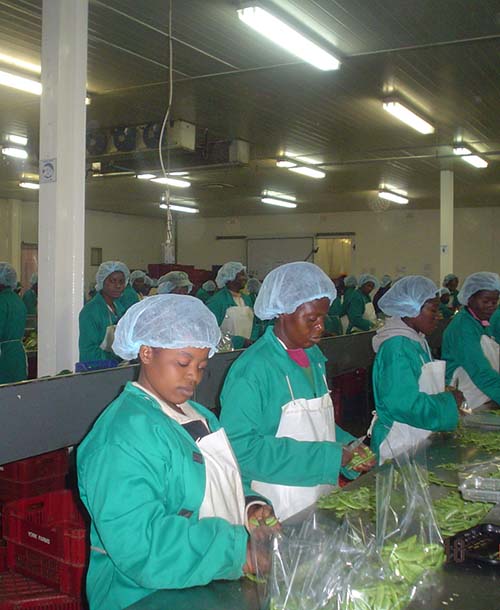Zambia
Cultivar hortalizas para los mercados mundiales
Francis Chama, gerente del almacén de embalaje York Farm (Zambia), cuenta con más de 10 años de experiencia en la gestión de la producción, el control de la calidad, la transformación, el embalaje y la exportación de hortalizas a mercados regionales y mundiales. Explica cómo los productores de Zambia han conseguido mejorar su capacidad para cumplir las prescripciones de los mercados internacionales e integrarse mejor en las cadenas de suministro.
 Francis Chama is Packhouse Manager at York Farm in Zambia.
Francis Chama is Packhouse Manager at York Farm in Zambia.What is the business model of York Farm?
York Farm specializes in the growing and packing of fresh vegetables and roses, mainly for export. It employs up to 800 workers. We have two farms: Kashima Farm and one in Makeni, west of Lusaka. We also have one packhouse to store, sort and pack products destined for export.
What do you export and to which markets?
We export baby corn, sugar snap peas, mange-tout peas, chillies and fine beans to various destinations, including Germany, the United Kingdom, New Zealand and South Africa.
What are some of the success factors of York Farm?
Compliance with international standards on food safety, farming, labour and the environment has contributed to the company's success in joining global supply chains for agricultural products.
Do you face any challenges when exporting?
Yes, we face several challenges. These include high production costs, limited market access, low market prices and the high cost of maintaining international standards and meeting export requirements. We also have limited capacity to conduct inspections of exported products and often face product rejections by customers due to quality issues.
What do you think are some of the challenges that least developed country (LDC) producers of agricultural products face in joining global supply chains?
One of the main challenges is lack of information, especially on export requirements. Other challenges include insufficient marketing skills, a lack of storage and transportation facilities, difficulty accessing farming equipment and quality inputs, and challenges related to standardization and grading.
 York Farm exports baby corn, sugar snap peas, mange-tout peas, chillies and fine beans to various destinations.
York Farm exports baby corn, sugar snap peas, mange-tout peas, chillies and fine beans to various destinations.
How does the international community help Zambian producers to better integrate into global supply chains?
To strengthen our capacity to meet international standards for our products, we have been working with the Standards and Trade Development Facility and the Enhanced Integrated Framework. Some of our joint activities have included training inspectors, farmers and traders on meeting phytosanitary requirements, such as those related to phytosanitary certificates, declarations and permits, and providing training on risk-based pest control activities.
As a result, we now have greater phytosanitary capacity, which has helped open new markets for our horticultural and floricultural products. The processing time and transport costs for our exports have been cut. And we have greater inspection capacity, which helps us better manage the risk of pests. Finally, we have reduced the incidence of product rejections, complaints and returns from customers.